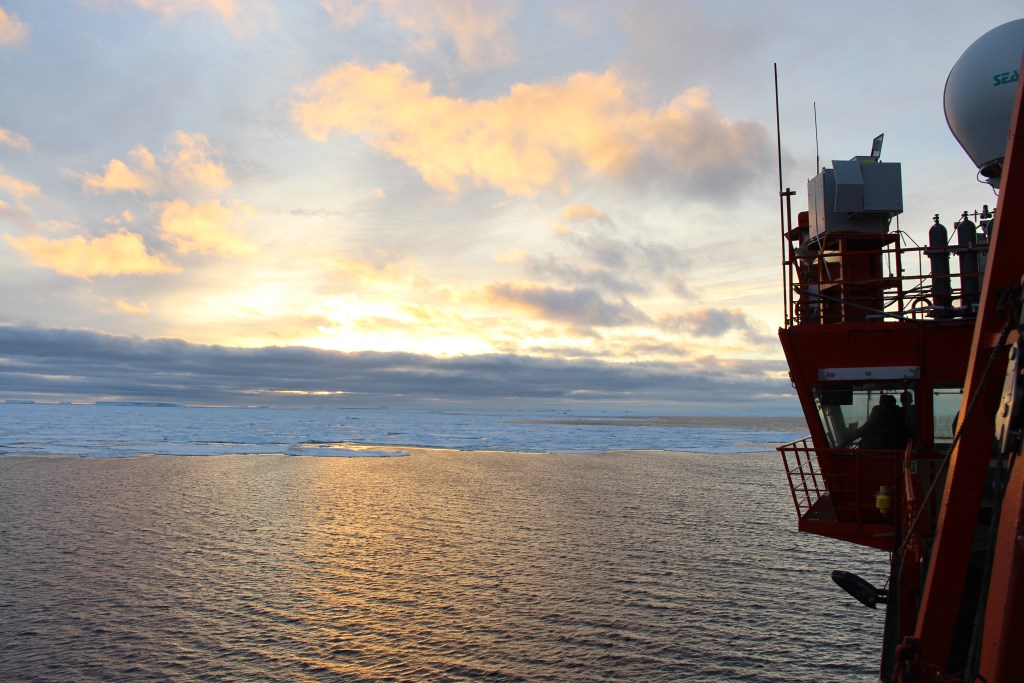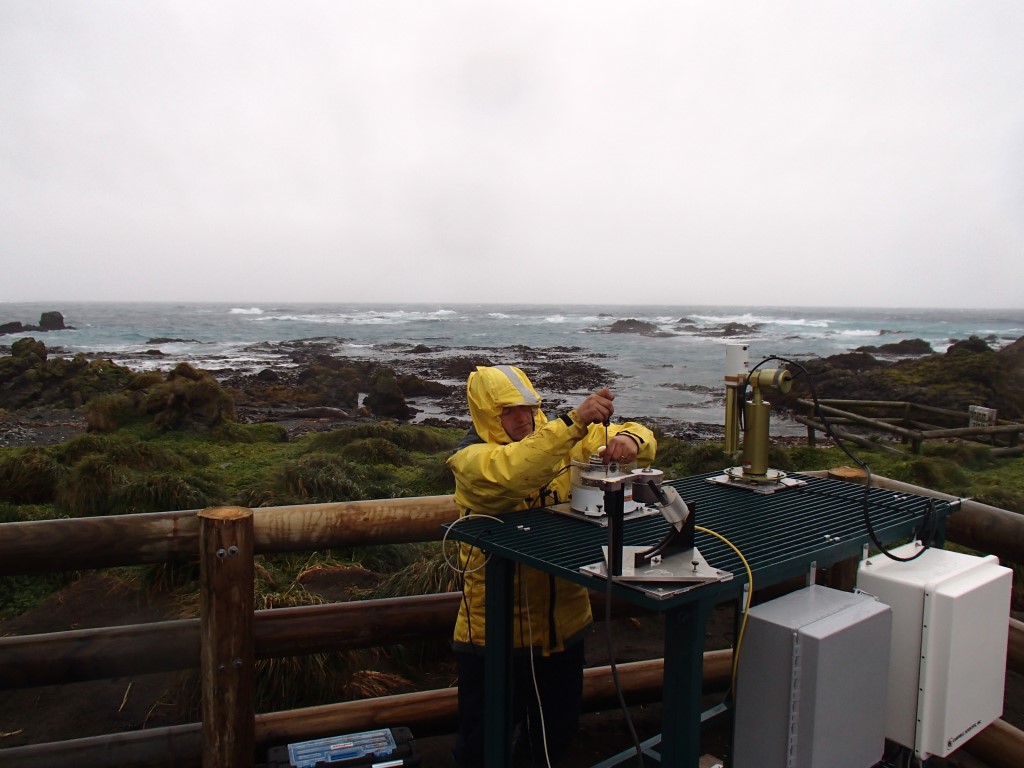BAMS Paper Highlights Initial ARM Southern Ocean Campaign Results
Published: 16 February 2021
MARCUS, MICRE included in overview publication of recent campaigns in the region

To improve the understanding and modeling of clouds, aerosols, precipitation, and their interactions over the remote Southern Ocean during various seasonal cycles, research organizations launched four separate yet collaborative field campaigns between 2016 and 2018.
Initial findings from these campaigns are documented within a new overview paper in early online release from the Bulletin of the American Meteorological Society (BAMS). Two of the campaigns—Measurements of Aerosols, Radiation, and Clouds over the Southern Ocean (MARCUS) and the Macquarie Island Cloud and Radiation Experiment (MICRE)—were collaborative efforts between the Atmospheric Radiation Measurement (ARM) user facility, Australian Antarctic Division, and the Australian Bureau of Meteorology.
The other two campaigns are Clouds, Aerosols, Precipitation, Radiation, and atmospheric Composition over the Southern Ocean (CAPRICORN) and the Southern Ocean Clouds, Radiation, Aerosol Transport Experimental Study (SOCRATES).
The corresponding author of the paper is Greg McFarquhar of the Cooperative Institute for Mesoscale Meteorological Studies and the School of Meteorology at the University of Oklahoma. McFarquhar was the principal investigator of MARCUS. MICRE’s principal investigator, Roger Marchand of the University of Washington, is a co-author.
The U.S. Department of Energy’s Atmospheric System Research (ASR) and the National Science Foundation supported this work.
Coming Together

This BAMS paper introduces MARCUS, MICRE, CAPRICORN, and SOCRATES, and details each campaign’s objective, structure, instruments, platforms used, and initial findings.
The four separate field campaigns complement one another by featuring variability in processes studied, season and meteorological conditions sampled, and model evaluations planned. Researchers can compare the aircraft, ground, and ship-based data sets across different seasons.
Together, these data provide the most comprehensive available measurements of thermodynamics, surface radiation, cloud, precipitation, and aerosol properties over the Southern Ocean.
As outlined in the paper, early results showed a largely pristine environment with aerosols above clouds, suggesting new particle formation and limited long-range transport from continents. The authors also noted high variability in cloud condensation nuclei and cloud droplet concentrations, and supercooled water in thin, multi-layered clouds.
Data from the field campaigns, when compared with existing models and satellite retrievals, illustrate how aerosols and meteorology couple to control Southern Ocean water and energy budgets. The authors say that ultimately these data will assist researchers in determining the factors that contribute to the excess absorption of solar radiation in weather and climate model simulations over the Southern Ocean.
Keep up with the Atmospheric Observer
Updates on ARM news, events, and opportunities delivered to your inbox
ARM User Profile
ARM welcomes users from all institutions and nations. A free ARM user account is needed to access ARM data.


















